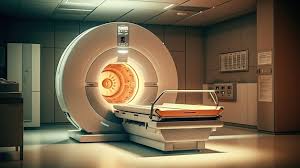Artificial Intelligence (AI) has rapidly become a transformative force in various sectors, and radiology is no exception. With advancements in machine learning and deep learning, AI is increasingly being employed to assist radiologists in diagnosing diseases from medical images, improving accuracy, and enhancing workflow efficiency. However, as AI systems become more integrated into clinical practice, the importance of transparency in these technologies cannot be overstated. In healthcare, where decisions can have profound implications for patient outcomes, understanding how AI models arrive at their conclusions is critical. This need for clarity leads us to the concept of Explainable AI (XAI), which aims to make the decision-making processes of AI systems more interpretable and understandable to users.

The Black Box Problem in AI
One of the significant challenges in the deployment of AI in radiology is the so-called “black box” problem. Many AI models, especially complex ones like deep neural networks, operate in ways that are not easily interpretable by humans. This lack of transparency makes it difficult for radiologists to understand the rationale behind AI-generated diagnoses or recommendations. Traditional machine learning models often provide limited insight into their decision-making processes, leading to skepticism among healthcare professionals regarding the reliability of these systems. In high-stakes applications such as healthcare, where misdiagnosis can result in severe consequences, transparency becomes paramount. Without a clear understanding of how AI models function, clinicians may be reluctant to trust and adopt these technologies fully.
Benefits of Explainable AI in Radiology
Implementing Explainable AI in radiology offers several benefits that can enhance the interaction between radiologists and AI systems. First and foremost, it fosters improved trust; when radiologists can understand the reasoning behind AI-generated diagnoses, they are more likely to embrace these tools as reliable partners in patient care. Additionally, explainability enhances the understanding of AI outputs, allowing radiologists to make informed decisions based on both human expertise and AI insights. This transparency also facilitates regulatory compliance and addresses ethical considerations, as stakeholders can ensure that AI systems operate within acceptable guidelines. Lastly, explainable AI promotes better collaboration between humans and machines, enabling a synergistic approach to diagnosis and treatment that leverages the strengths of both.
Techniques for Achieving Explainability
Several techniques have been developed to achieve explainability in AI systems, particularly in the context of radiology. Methods such as Local Interpretable Model-agnostic Explanations (LIME) and SHapley Additive exPlanations (SHAP) provide insights into how specific features contribute to a model’s predictions. Attention mechanisms can also be employed to highlight which areas of an image were most influential in the decision-making process. These techniques can be effectively applied to radiology AI models, allowing radiologists to visualize and comprehend the factors driving AI-generated results. However, it is essential to consider the trade-offs between model accuracy and explainability; while more interpretable models may sacrifice some predictive performance, achieving a balance between these aspects is crucial for fostering trust and ensuring effective clinical application.
Challenges and Limitations
The Complexity of Medical Imaging Data
Medical imaging data presents unique challenges for AI models due to its inherent complexity. Radiological images, such as X-rays, CT scans, and MRIs, contain vast amounts of information that can vary significantly in quality, resolution, and modality. This variability makes it difficult for AI systems to consistently interpret images accurately. Additionally, the presence of noise, artifacts, and overlapping anatomical structures can further complicate the training and evaluation of AI models. As a result, creating algorithms that can provide reliable and interpretable outputs from such complex data is a significant hurdle in the development of Explainable AI (XAI) in radiology.
The Difficulty of Providing Simple and Understandable Explanations
Another challenge in implementing Explainable AI in radiology is the difficulty of translating complex model outputs into simple, understandable explanations for clinicians. While AI models may generate accurate predictions, the underlying processes that lead to these predictions can be convoluted and not easily articulated. Radiologists often require clear and concise explanations to integrate AI insights into their clinical decision-making effectively. Striking a balance between the sophistication of AI algorithms and the simplicity of their explanations is crucial but remains a significant challenge in the field.
The Potential for Misuse of Explanations
The potential for misuse of explanations generated by AI models poses another limitation. If explanations are overly simplistic or misleading, they could lead to incorrect interpretations by radiologists. For instance, if an AI model highlights certain features in an image as critical for its diagnosis without appropriate context, a clinician might place undue emphasis on those features while neglecting other relevant clinical information. This risk underscores the importance of ensuring that explanations are not only interpretable but also accurate and contextually relevant. Misinterpretation of AI-generated explanations could undermine trust in AI systems and negatively impact patient care.
The Future of Explainable AI in Radiology
Ongoing Research and Development in AI
Ongoing research and development in Explainable AI are crucial for addressing the challenges associated with AI in radiology. Researchers are exploring various approaches to enhance the interpretability of AI models, including developing new algorithms that prioritize explainability during training. Techniques such as visual saliency maps, which highlight areas of interest in medical images, are being refined to provide clearer insights into model decision-making processes. Additionally, interdisciplinary research that combines expertise from computer science, medicine, and ethics is essential for advancing XAI methodologies tailored specifically for radiological applications.
The Potential Impact of AI on Clinical Practice and Patient Care
The integration of Explainable AI into clinical practice has the potential to significantly improve patient care. By providing radiologists with clear insights into AI-generated diagnoses, XAI can enhance diagnostic accuracy and support clinical decision-making. Improved understanding of AI recommendations can facilitate better communication with patients about their conditions and treatment options, fostering a more collaborative healthcare environment. Furthermore, as trust in AI systems grows through transparency, radiologists may be more inclined to utilize these tools, ultimately leading to better patient outcomes.
The Importance of Collaboration Between AI Researchers, Radiologists, and Ethicists
Collaboration among AI researchers, radiologists, and ethicists is vital for the successful implementation of Explainable AI in radiology. This interdisciplinary approach ensures that the development of XAI technologies aligns with clinical needs and ethical considerations. Radiologists can provide valuable insights into the practical challenges faced in interpreting medical images, while ethicists can address concerns related to bias, accountability, and informed consent. By working together, these stakeholders can create robust frameworks for integrating XAI into radiological practice that prioritize both patient safety and technological advancement.
Conclusion
Explainable AI holds great promise for enhancing the field of radiology by improving transparency and trust between AI systems and healthcare professionals. While challenges such as the complexity of medical imaging data, the difficulty of providing understandable explanations, and the potential for misuse exist, ongoing research and collaboration among various stakeholders can pave the way for effective solutions. As we move forward, it is essential to prioritize explainability in AI systems to ensure that they serve as reliable partners in patient care, ultimately leading to improved diagnostic accuracy and better health outcomes.
FAQ
What is explainable AI, and why is it important in radiology?
Explainable AI (XAI) refers to methods and techniques that make the decision-making processes of artificial intelligence systems transparent and understandable to users. In radiology, XAI is crucial because it enables radiologists to trust AI-generated diagnoses and integrate them effectively into clinical practice.
How can we make AI models more transparent?
To enhance transparency in AI models, researchers can employ techniques such as Local Interpretable Model-agnostic Explanations (LIME) and SHapley Additive exPlanations (SHAP). These methods help elucidate how specific features influence model predictions, allowing users to understand the rationale behind AI outputs.
What are the challenges of achieving explainability in radiology AI?
Achieving explainability in radiology AI faces several challenges, including the complexity of medical imaging data, the difficulty of providing simple and comprehensible explanations, and the potential for misuse or misinterpretation of generated explanations.
How can explainable AI improve patient trust in AI-assisted diagnosis?
Explainable AI can improve patient trust by providing clear insights into how AI systems arrive at their conclusions. When clinicians understand the reasoning behind AI-generated diagnoses, they are more likely to communicate effectively with patients about their conditions and treatment options, fostering a collaborative healthcare environment.
What are the potential ethical implications of using AI in radiology?
The use of AI in radiology raises several ethical implications, including concerns about bias in algorithms, accountability for errors made by AI systems, and informed consent regarding the use of AI tools in patient care. Addressing these issues requires careful consideration and collaboration among stakeholders to ensure that ethical standards are upheld.


Add a Comment